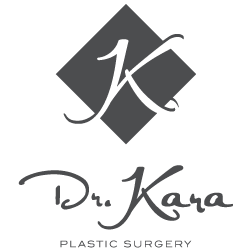The Most Effective Surgical Techniques
The typical male chest has little fat and glandular tissue. The ideal male chest is flat and chiseled, with muscular definition. Excess tissue on the chest, creating the appearance of enlarged breasts, can be feminizing and a source of embarrassment. Known as gynecomastia, the condition is actually quite common. One study states that it makes up over 65% of all male breast disorders, while others reporting even higher numbers.
Surgical correction of gynecomastia is available if you want a more masculine looking chest.
=
What contributes to male enlarged breasts?
Gynecomastia can be caused by one or more of the following:
- excess breast tissue (glandular)
- excess fat
- loose skin
Dr Kara on tv: Watch the video to find out how this procedure can dramatically improve a patient's self-confidence.
Accurate pre-surgery assessment is crucial
Because gynecomastia can be caused different types of tissue, the most important part of your pre-surgery assessment is determining what is causing your condition. During your consultation, Dr. Kara will examine your chest, paying close attention to the tissues in the area. Your underarm area may also be examined. An overview of your health will be discussed. The following medications have been known to cause gynecomastia, making surgery ineffective:
- steroids
- chemotherapy drugs (e.g. methotrexate and ciclophosfamide)
- marijuana
- prostate cancer drugs that are antiandrogens (e.g. flutamide, enzalutamide)
- antipsychotics (e.g. haloperidol)
In addition, soy-based foods and other natural products that contain phytoestrogens can also be to blame.
Surgery steps
Excess breast tissue
An over production of estrogen is what causes excess breast tissue, and this is what is considered to be true gynecomastia. It is normal for this to occur during infancy and puberty. Interestingly, a study in The New England Journal of Medicine reports that gynecomastia in prepubertal boys is linked to the topical use of lavender and tea tree oils, both of which have estrogenic and antiandrogenic activities. When these oils were no longer applied to the boys, their gynecomastia went away. The development of gynecomastia during puberty is very common, but usually resolves within a few months to two years. However, it can also be permanent, or result from hormonal balances, steroid use and older age.
When breast tissue is pinched, it is firm and resists a bit. If you were to place you thumb and forefinger on either side of your areola and gently bring them together in a pinching action, there would be a rim of tissue with a diameter of less than .5cm that would have a similar consistency as the nipple.
Excess breast tissue can be removed by excision, or liposuction in some cases.
For excision, the incision would usually be located partially around the areola or in the breast crease. For liposuction, the incision would be along the border of the areola or within the armpit. It may also be located in the breast crease.
Excess fat
As we age, it gets more difficult to get rid of fat through exercise and diet alone. You may have a predisposition to storing fat in particular areas. Pockets of stubborn fat appear, and these may exist in your chest. When excess fat is the primary cause of enlarged male breasts, this is known as pseudogynecomastia. Pseudogynecomastia isn’t true gynecomastia because it’s fat to blame, not breast tissue.
Fat has is softer and far more pliable than breast tissue. In doing the same “pinch test” mentioned above, there would be no resistance and no rim of tissue.
Excess fat can be removed by excision or liposuction.
For excision, the incision would usually be located partially around the areola or in the breast crease. For liposuction, a small incision is made, usually along the border of the areola or within the armpit. It may also be located in the breast crease.
Loose skin
Good skin elasticity gives you a smoother, resilient complexion. When the structure of the skin is weakened with such factors as weight fluctuations, aging and poor lifestyle habits, it becomes less taut. It loosens and sags. Saggy skin can give you the appearance of gynecomastia, although like excess fat, this would also be considered pseudogynecomastia.
Skin is also soft and pliable like fat. It is also on the surface of the chest and may appear wrinkled, making skin laxity easier to detect. You can check if you have loose skin by pinching a bit of your chest and gently pulling it away from your body.
Loose skin can only be tightened by excision. The incision would be partially around the areola or within the breast crease.

Long lasting or permanent results
Your gynecomastia is different and should be treated with a unique approach that fully resolves the issue. Doing so will give you longer lasting, or permanent, results.

